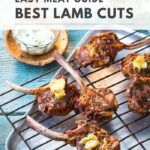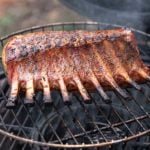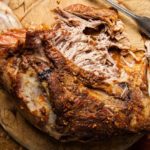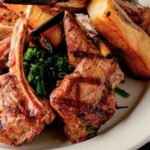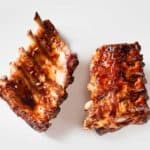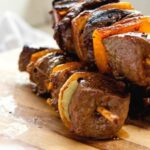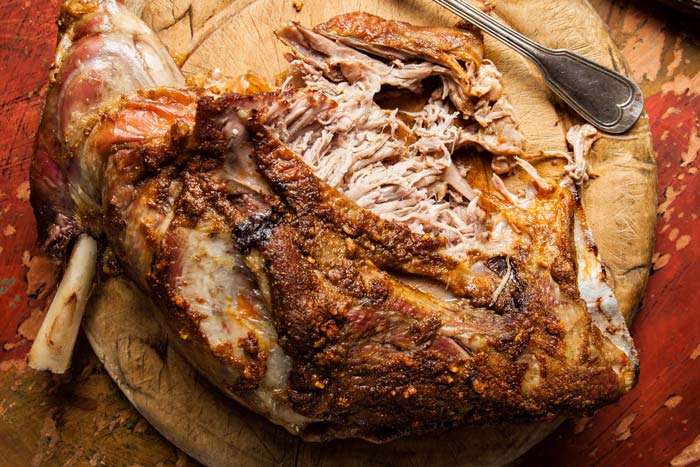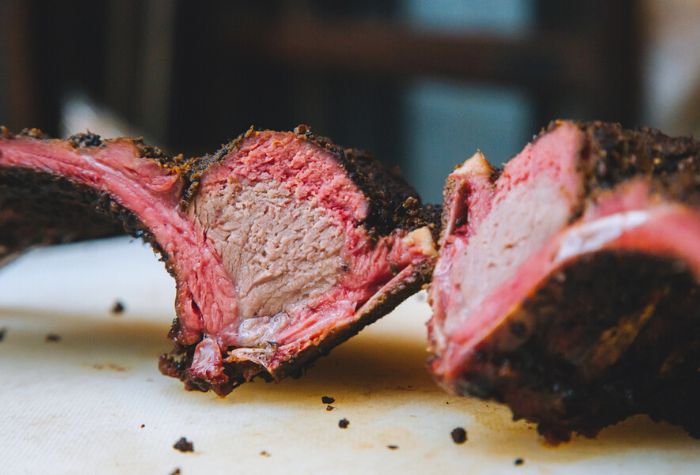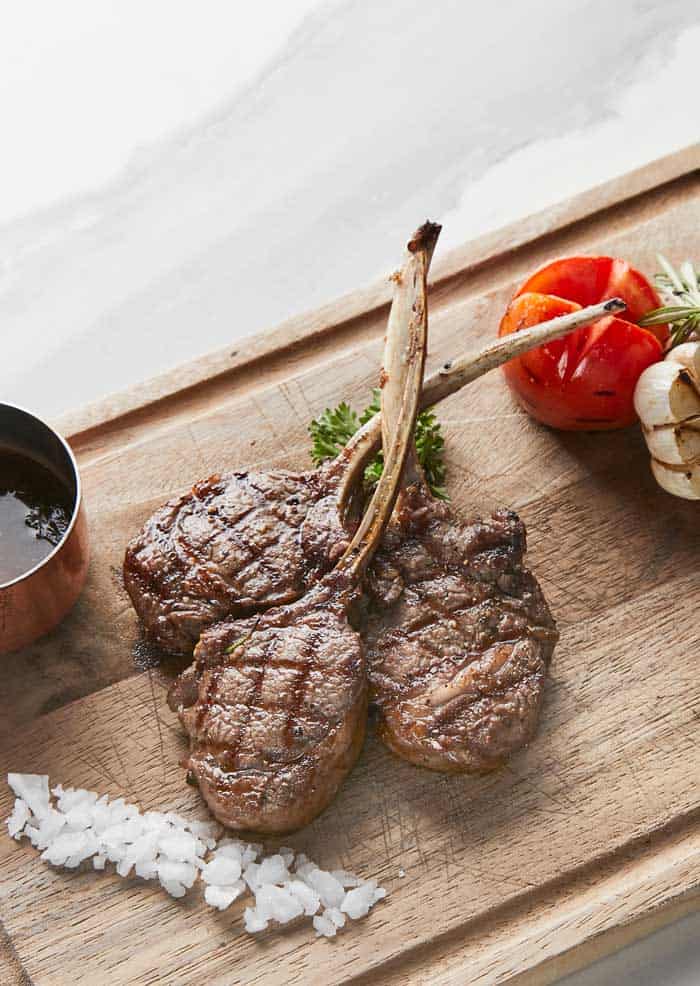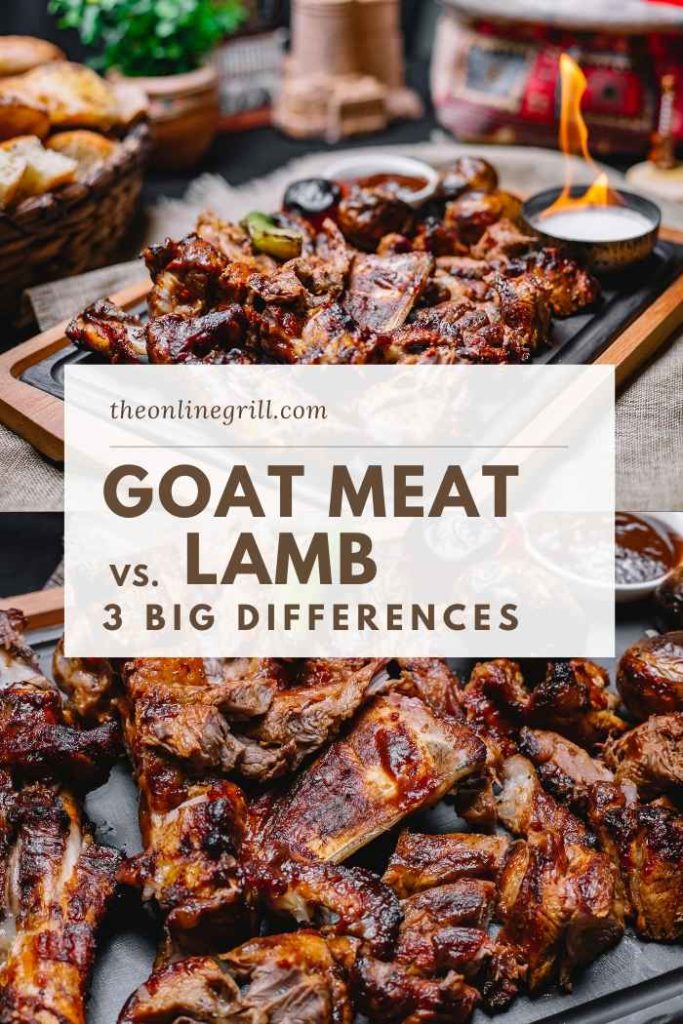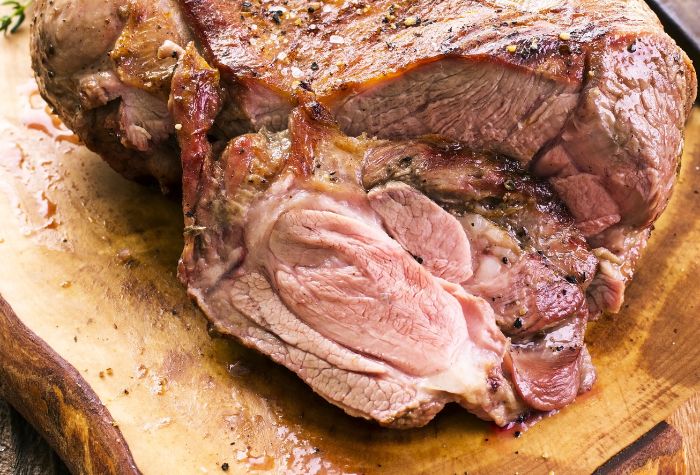The best lamb chop cuts from loin to rack, and leg to shank. Choose the right meat cut for your next recipe.
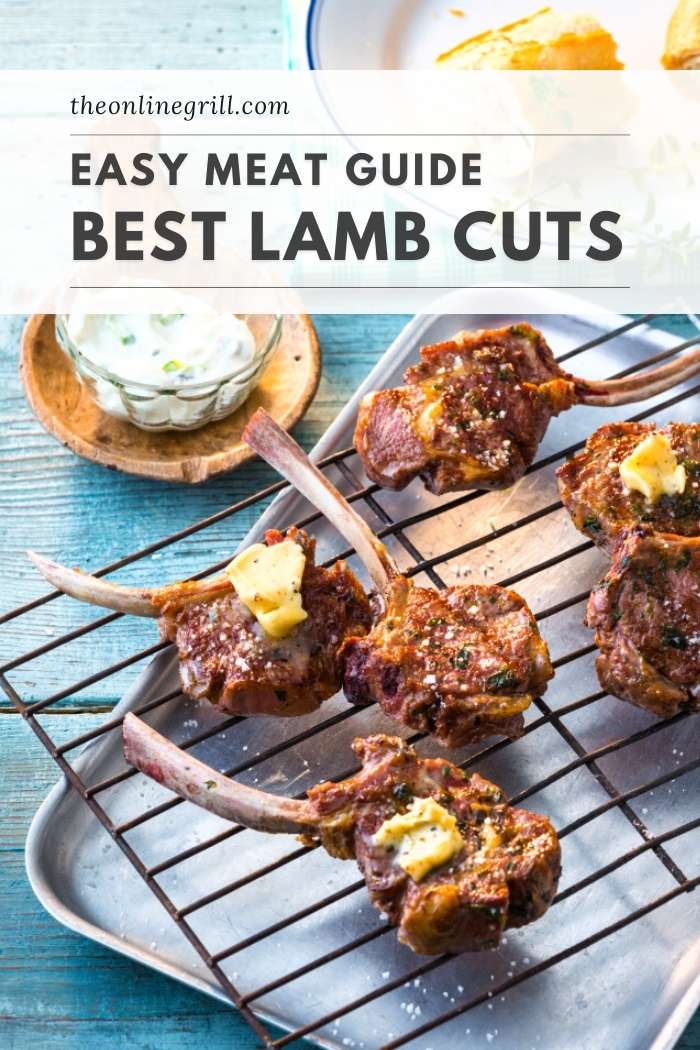
Lamb probably isn’t the first meat that comes to mind when thinking about what you’ll cook next on the grill. Sure, we all love a bit of roast lamb for weekend dinner, but if that’s all you’re using this meat for, then you’re missing a trick!
Lamb has a rich and gamey taste that you just don’t get from beef, and adding it to your barbecue repertoire opens you up to a whole new world of flavors and interesting recipes.
Today we’re sharing all you need to know about the best cuts of lamb, what makes them unique, and how best to cook them.
Shoulder

Lamb shoulder is a primal foresaddle cut taken from the upper foreleg and shoulder area of the animal. As it comes from a hard-working muscle group, the meat is very flavourful, but it does take a bit longer to become tender, so is best when cooked low and slow.
It’s ideal for slow roasting or stewing and develops an even better taste if it’s kept on the bone while cooking. However, lamb shoulder reaches new heights when cooked low and slow over woodfire in your smoker or over indirect heat on your charcoal grill.
Lamb shoulder can also be turned into shoulder chops – they aren’t as sought after as traditional lamb chops taken from the loin or ribs, but they cook more quickly than other cuts.
When we talk about low and slow cooking, we normally mean that we’re smoking meats rather than grilling them directly over flames, which is the exact case when it comes to lamb shoulder. You need to have it over low and indirect heat for around four hours, depending on the size of the cut.
Try This Recipe: Our smoked lamb shoulder is tender and pulls apart beautifully. To make it, prepare the meat by trimming any excess fat and applying a good dry rub. Place the lamb on your smoker or grill grates, close the lid, and smoke at 250°F (121°C) until it reaches an internal temperature of 165°F (74°C). If it looks a little dry, you can spritz the meat with stock or add some more water to your water tray if the humidity seems too low.
Rack
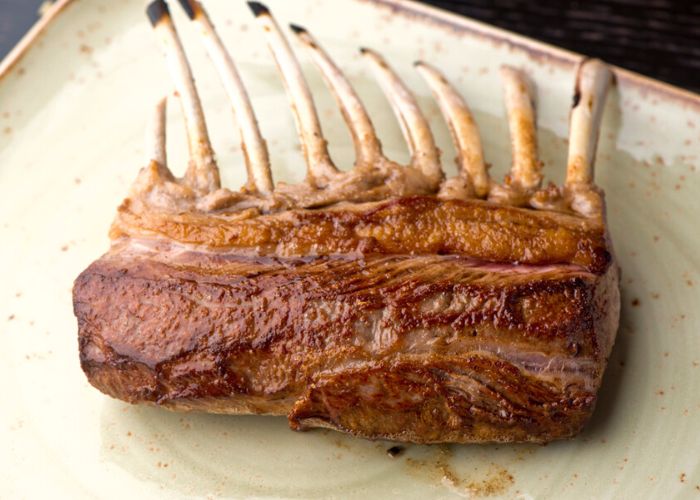
Lamb rack is a primal cut taken from the rib area of the sheep and is the most expensive of all the cuts of lamb. It’s a bone-in cut containing both the rib and backbone.
Rack of lamb can be divided down into smaller individual rib steaks to create lamb cutlets (also known as lamb rib chops).
The rack is delicious when roasted, but is taken to a new level when cooked over barbecue, like with our smoked rack of lamb. The bones should be prepared by frenching (removing any sinew or connective tissue to leave a clean bone) and the fat cap removed before cooking.
Lamb cutlets, on the other hand, are great for cooking over high heat and taste great on the grill.
Prepare your lamb cutlet by frenching the bone and trimming any excess fat from the meat. Lamb cutlets are best served slightly pink in the middle, but to make sure they are cooked safely on the grill, the reverse searing technique should be adopted.
Set up your grill so that it is ready for two-zone cooking. Once the correct temperatures have been reached, place your lamb cutlets in the low or cooler zone and cook until they are within 10℉ of their finished temperature (120℉ if you’re aiming for medium-rare) and then move them to the high heat side of the grill to give them their sear and finish the cook.
Leg
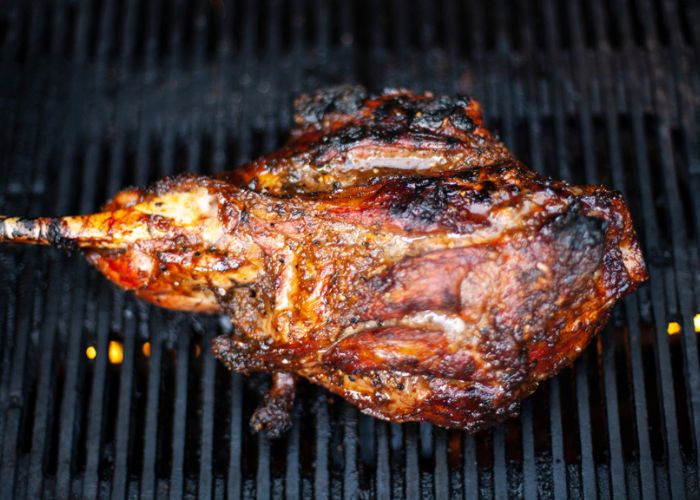
Leg of lamb is a large primal cut of meat from the top hind leg. It can be cut into smaller leg chops, but more often than not, you’ll see it cooked and served as a centerpiece dish for larger meals or celebrations (lamb is a very popular traditional easter dish in Europe).
Much like the lamb shoulder, the leg cut is a hard-working group of muscles, so tastes best when it’s slow cooked and left on the bone.
Roasted lamb leg is a popular recipe in a number of countries, with them all adding their own spin on seasoning:
- Mediterranian countries will often add garlic, oregano, and lemon juice and will roast the leg of lamb in a pan with its own juices and some red wine
- In France, rosemary and garlic are the favored seasonings
- Indian masala raan adds a mix of delicious aromatic spices
Since a leg of lamb is a large cut of meat, it needs to be cooked over indirect heat for a prolonged period. Grilling a leg of lamb on the grill is a great way to get a delicious tasting meal for minimal effort. All it takes is a little prep and patience.
The suggested cooking time for large cuts of meat (and to get it to medium doneness) is to measure the meat at the thickest part in millimeters and cook for one minute per millimeter. For a boneless 5-pound leg joint, this is about 40 minutes.
Try This Recipe: Our grilled leg of lamb combines the meat joint with a delicious garlic marinade with herb butter for melt-in-your-mouth goodness. Set your grill up for indirect grilling, and fire it up to high (about 400°F/205°C). Place the leg joint on the indirect side of the grill grates and cook for 40 minutes, or until the internal temperature hits 130°F (55°C) for medium-rare. Remove from the heat, tent in foil, and leave to rest for 15 minutes before serving.
Loin
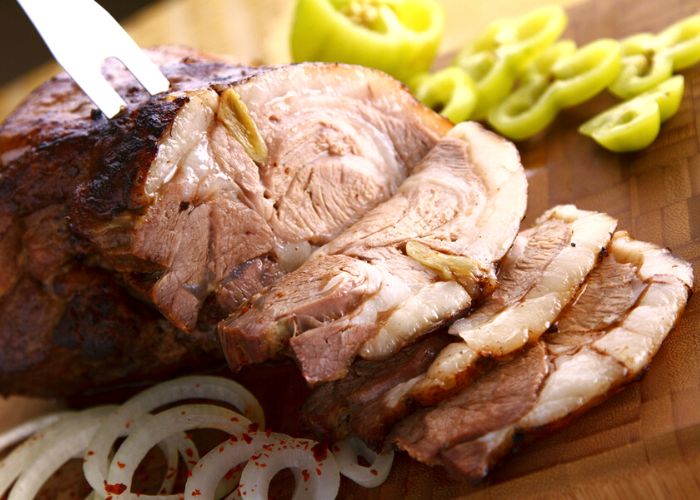
Loin is a primal cut front the hindsaddle of the sheep. It is a very tender cut of meat and is best cooked using dry heat, which is ideal for grilling.
Loin is most commonly divided to make lamb loin chops. Loin chops are sometimes called lamb T-bones as they have a characteristic T-shaped bone running through the meat.
If you want to marinate your loin chops, it’s best to do so for at least an hour before grilling.
You’ll need your grill to medium-high heat, and the chops need to cook for around 3-4 minutes on each side until they are sufficiently browned. This should leave them medium rare but as always, check the internal temperature of the meat before taking it off the grill to ensure it is cooked correctly.
Neck
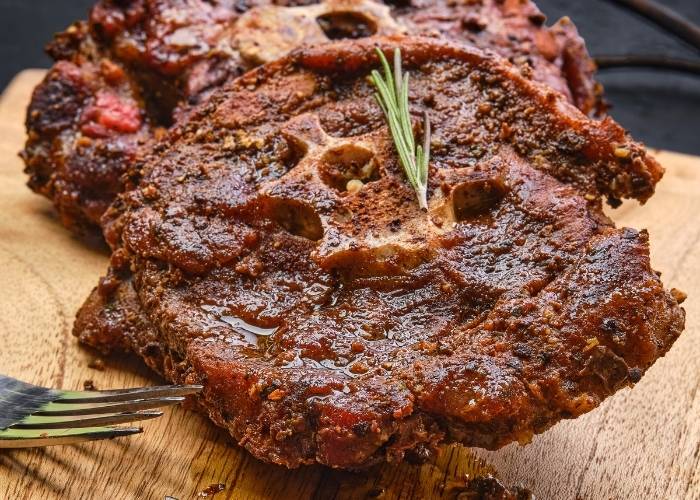
Lamb neck is a foresaddle cut that can be divided or prepared and sold as a neck rosette, neck chop, or neck fillet. It’s a subprimal cut of the shoulder.
As the sheep is a grazing animal, the neck muscles are a well-worked area. The neck contains a lot of connective tissue but, as long as it is cooked correctly, those connective tissues will melt and infuse the meat with a rich flavor and make it nice and tender.
Lamb neck is a great meat cut to make kabobs, which are ideal for cooking on the grill.
Try This Recipe: Our pull-apart BBQ lamb neck is tender and beautifully coated in hickory smoke. To make it, take your neck fillet and cut it into cubes, add marinade and leave it in the fridge for two or more hours.
Set your grill up so that it reaches medium to high heat. Take the marinated lamb, add it to kebab skewers, and place on the grill until cooked to a medium to well doneness. Once it is fully cooked and the skewers are cool enough to handle, remove the meat from the skewers and serve.
Breast
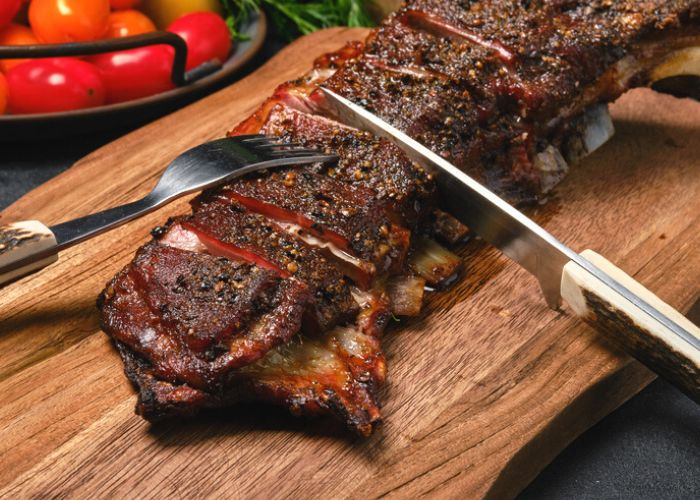
Lamb breast is a primal foresaddle cut taken from the lower chest area of the sheep. The muscles here are worked very heavily, so the cut contains a lot of connective tissue, fat, and cartilage.
Lamb breast is a fairly cheap cut of meat due to this extra connective tissue and fat but if you know how to prepare it properly it can be delicious.
Lamb breast is similar to pork belly in how it looks and cooks. They both have that fat cap along one side that helps to add a really deep flavor to the meat, and one of the best ways to cook it is low and slow over a two-zone grill.
- Coat the lamb breast lightly with olive oil (this is to prevent it from sticking to the grill grates) and massage in any seasonings or rubs you want to add.
- Place your lamb breast belly side-down on the lower temperature side of your grill. Cook it for 20mins with the lid closed and then flip it and cook the other side for a further 20mins.
- Once your lamb has got within 10℉ of its final internal cooking temperature, move it to the high heat side of the grill and sear it for 4-5mins on each side until you have got a nice charr.
- Remove the lamb breast from the grill and leave it to rest for 10 minutes before slicing and serving.
Shank
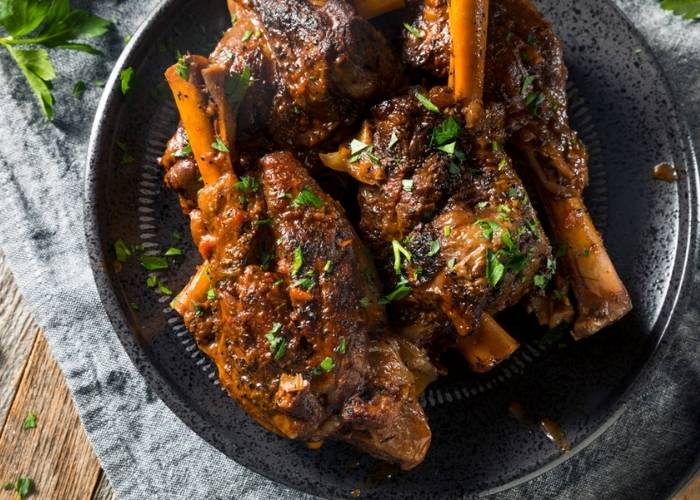
Lamb shanks are a bone-in cut taken from the lower part of the primal leg cut and can come from both the foresaddle and hindsaddle legs.
Lamb shanks contain a lot of collagen, so they taste best when cooked slowly over low heat. This allows the collagen to melt, which makes the meat tender, as well as letting the flavor from the bone fully diffuse.
Try This Recipe: Our smoked lamb shank is quickly prepared with a simple salt and pepper dry rub, before being cooked over hickory smoke. After two hours, we then finish our shanks in our red wine braise.
Flank
Lamb flank is a subprimal cut of the loin coming from the abdominal muscles of the sheep. It can be a notoriously tough cut of meat if not prepared and cooked properly.
Cuts such as flank hold a lot of connective tissue, so cook well over a low, long, and moist heat – this makes lamb flank ideal for roasting, stewing, or braising.
Flank is also often turned into minced or ground lamb, which works well in a number of recipes. Lamb has a slightly gamier and richer flavor than beef and is a great way to put a new spin on some old favorites.
Lamb flank is best enjoyed ground, and can be used as meatballs, burgers, or Shepard’s pie.
